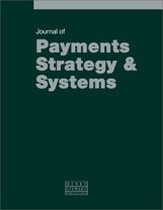Income and banking access in the USA: The effect on bill payment choice
Abstract
Consumer payment methods are determined by a number of factors, including the type of bill, the value of the bill, whether the bill is to be paid online or automatically, and — by no means least of all — the demographic and income profile of the individual making the payment. As this paper argues, the convenience and speed provided by automatic and online payments do not benefit all US consumers equally. Unbanked consumers lack access to most payment methods and hence use cash or prepaid cards to pay their bills. Low-income consumers are more likely to pay in person, use significantly more cash, and are less likely to set up automated or online bill payments, regardless of whether they have a bank account.
The full article is available to subscribers to the journal.
Author's Biography
Claire Greene is a retail payments risk expert at the Federal Reserve Bank of Atlanta. Prior to this, she focused on consumer payments research at the Federal Reserve Bank of Boston. Greene earned her MBA from Northeastern University and her bachelor of music degree from Northwestern University.
Joanna Stavins is a senior economist and policy adviser at the Federal Reserve Bank of Boston, where she researchers payments issues. Her research focuses on understanding how and why consumers pay the way they do, and includes all aspects of consumer payment behaviour. Her work has been published in the RAND Journal of Economics, The Review of Economics and Statistics, Journal of Banking and Finance, Review of Network Economics and Journal of Financial Services Research. She earned both her BA and her PhD in economics from Harvard University.
